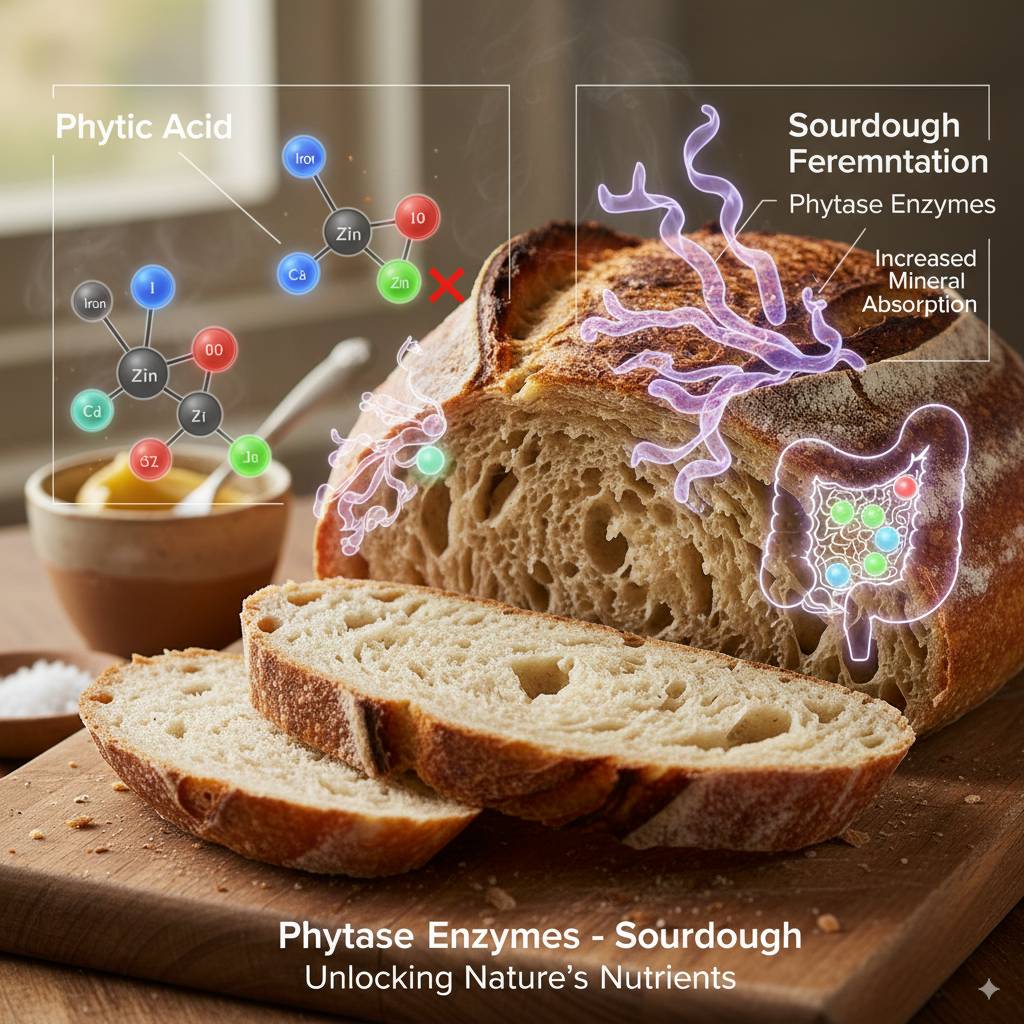Sourdough isn’t just about tangy flavor and a beautiful crust—it’s also packed with hidden nutrition with the help of phytase enzymes. Thanks to phytase enzymes produced during fermentation, sourdough can actually unlock minerals that other breads keep locked away. Here’s how the science works.
Phytase Enzymes in Sourdough: How Fermentation Unlocks More Nutrition
When most people think about sourdough, flavor and texture come to mind first—the tangy taste, the chewy crumb, the crisp crust. But behind the scenes, there’s a fascinating bit of food science at work. The natural fermentation that makes sourdough so unique also helps unlock more nutrition from the grains we eat. A key player in this process? Phytase enzymes.
What Is Phytic Acid?
Phytic acid is a compound found in grains, nuts, seeds, and legumes. While it’s beneficial for plants, it acts as an antinutrient in humans. That means it binds to important minerals such as iron, zinc, and calcium, making them less available for our bodies to absorb.
If your diet is rich in whole grains but lacks diversity, high levels of phytic acid could contribute to mineral deficiencies over time. That’s why fermentation has been such an important part of traditional food preparation across cultures—it naturally helps reduce antinutrients.
Enter Phytase: The Enzyme That Frees Up Minerals
When flour undergoes natural fermentation, as in sourdough bread, the microbes in the starter produce phytase enzymes. These enzymes break down phytic acid, freeing the minerals it has locked up. The result? A loaf of bread that isn’t just flavorful but also more nourishing.
Research has shown that sourdough fermentation can significantly increase the bioavailability of minerals like iron and zinc compared to breads made with commercial yeast. It’s one of the reasons sourdough has endured for centuries—it nourishes while it satisfies.
Not All Fermentation Is Equal
It’s important to note that the effectiveness of phytase depends on:
- Fermentation time – Longer fermentation allows more phytic acid to break down.
- Flour type – Whole grains contain more phytic acid (and more minerals), so the impact of fermentation is greater.
- Starter health – A well-fed, active sourdough starter produces more enzymes and supports a stronger fermentation process.
That means not every naturally fermented bread will yield the same nutritional benefits. Still, sourdough consistently stands out as one of the best ways to make whole grains more digestible and nutritious.
Why This Matters for Your Loaf
Beyond taste and texture, sourdough’s slow fermentation offers a deeper benefit: it helps your body get more from the food you already eat. With phytic acid reduced, minerals are more available, digestion is easier, and bread becomes not just a comfort food but a nutrient-dense staple.
So the next time you bite into a slice of sourdough, know that you’re enjoying more than great flavor—you’re tapping into an ancient, natural process that makes bread both delicious and nourishing.
